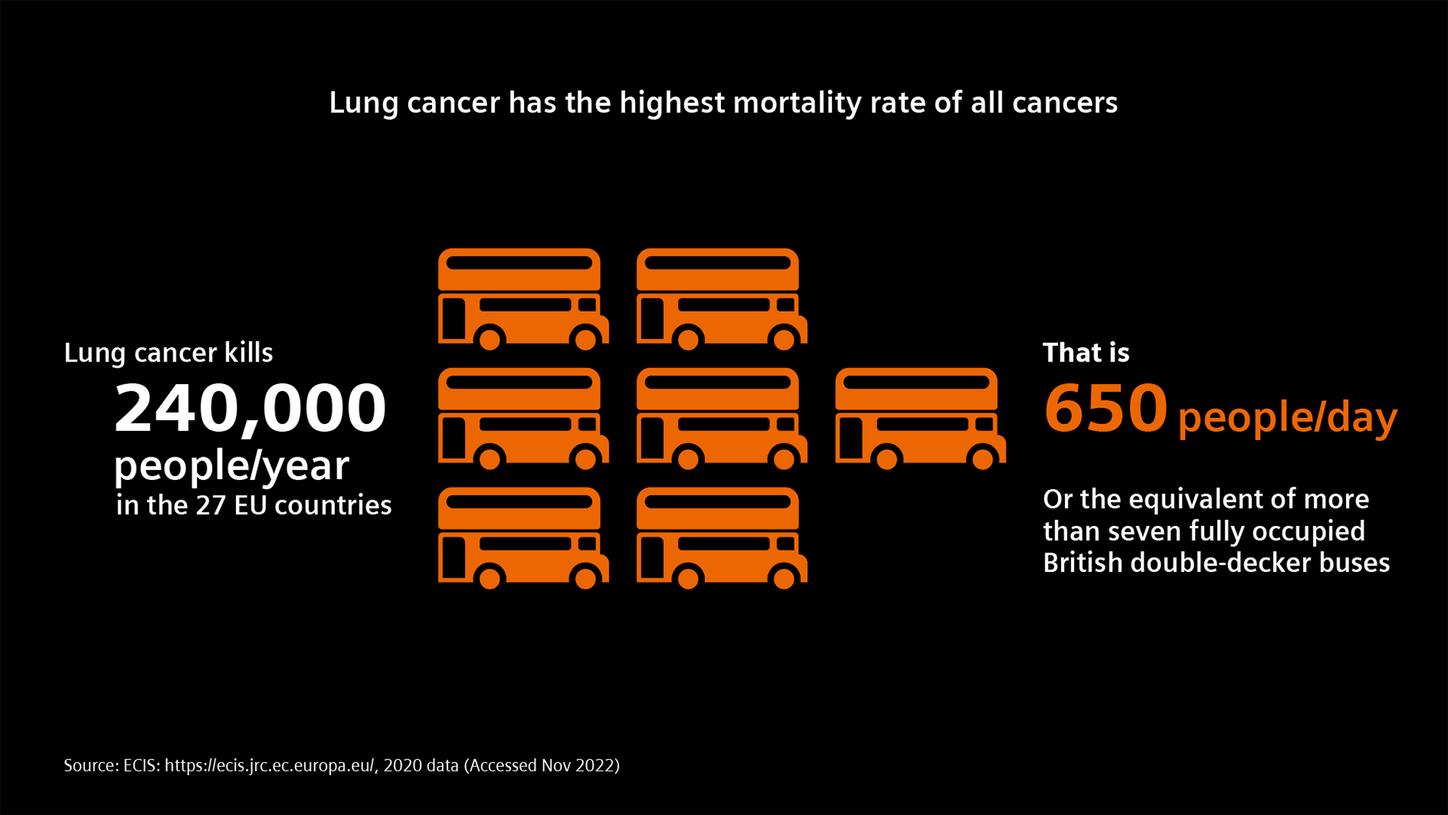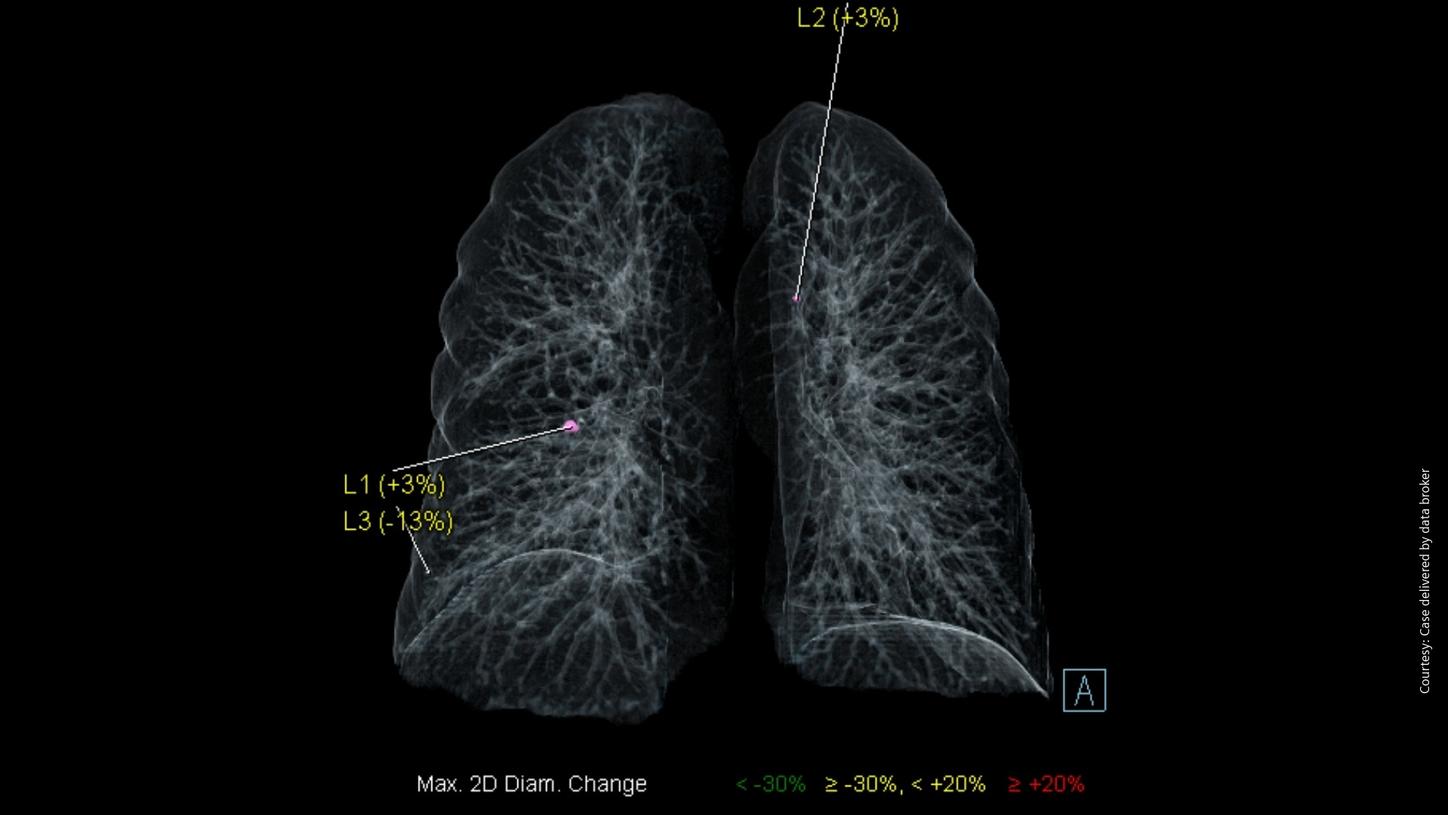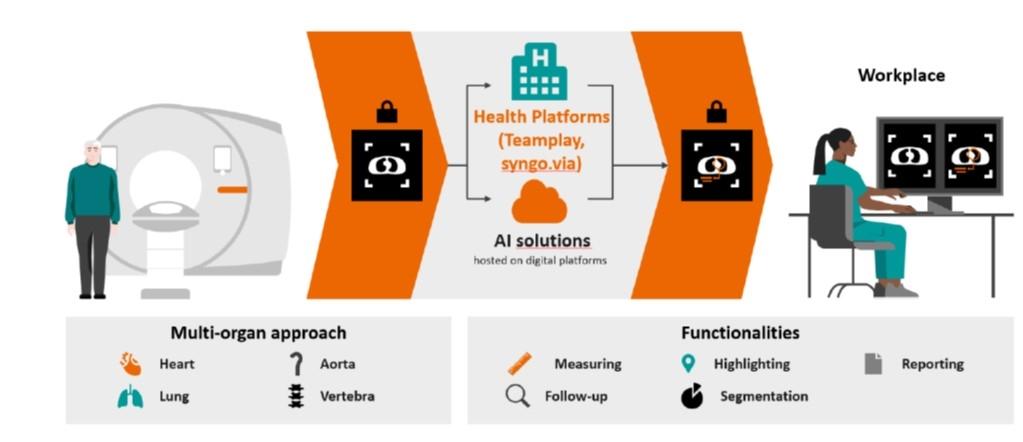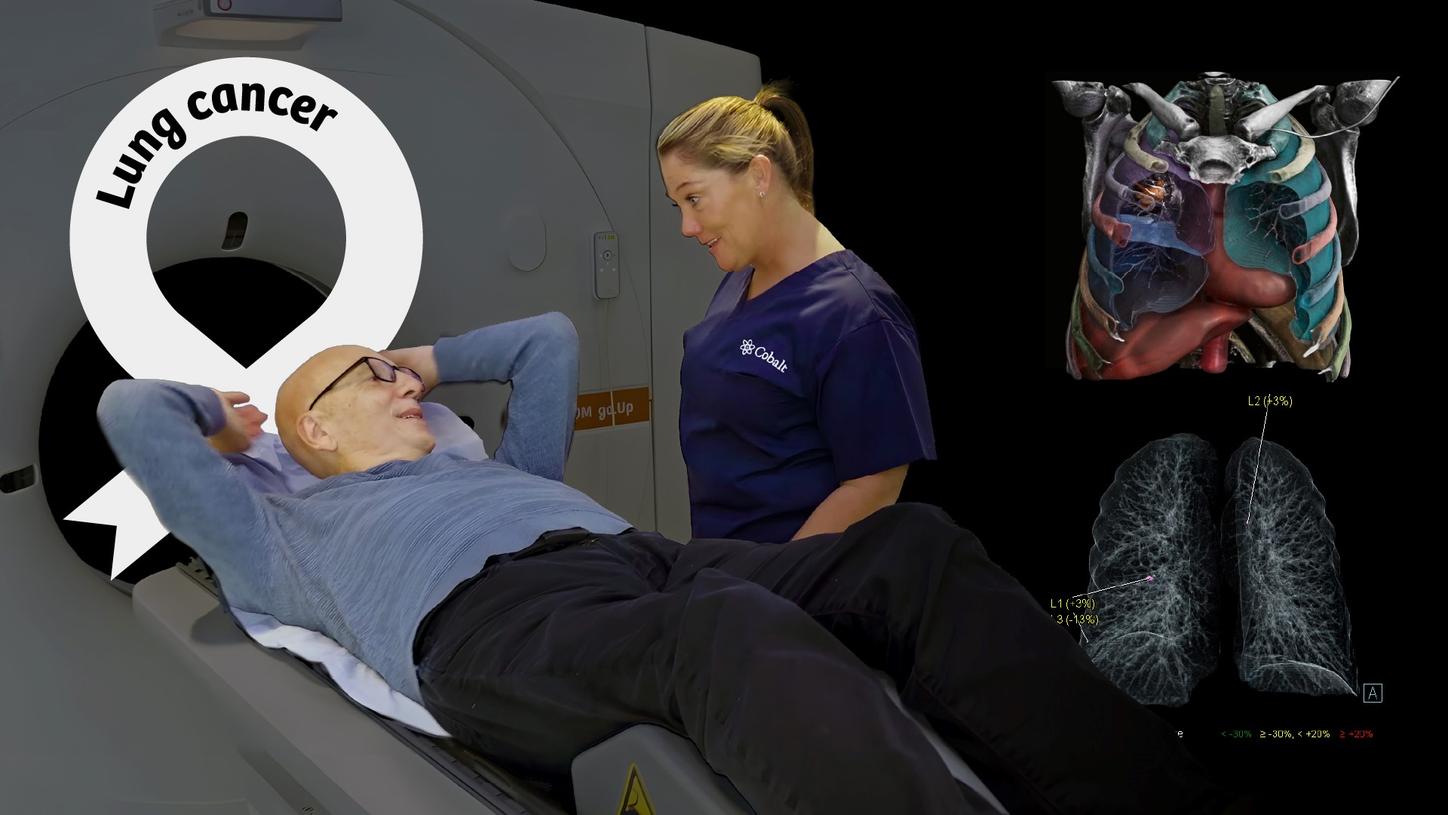
How lung cancer screening will make a difference
Challenges in lung cancer
Lung cancer has the highest mortality rate of all cancers and one of the worst five-year survival rates, at 19 percent for men and 25 percent for women [1]. It is the deadliest cancer for men worldwide, the second deadliest for women [2]. What makes lung cancer so deadly is that the symptoms are unspecific. Patients also often only come to the clinic when tumors have exceeded a critical size or when cancer cells have attacked the lymph nodes or have metastasized.
Early detection in lung cancer
The only chance of a cure is to diagnose lung cancer as early as possible. Early detection and the introduction of screening programs have the potential to fundamentally improve lung cancer healthcare. Although treatment for advanced tumor stages, such as immunotherapy, works well, it is also very expensive and a significant burden for the healthcare system. The cost per life saved by a screening program is therefore much lower.
We ask ourselves what to say to patients who stopped smoking 20 years ago and who develop lung cancer. Should we tell them: If you had continued smoking, you would have been screened?
Barbara Baysal, German Self-Help Lung Cancer Association (Bundesverband Selbsthilfe Lungenkrebs e.V.), т August 23, 2023
We now have eight large, randomized studies and masses of real-world data, mainly from the USA. We have a clear recommendation from the professional societies. We will not get any more evidence.
Prof. Jens Vogel-Claussen, MD, Deputy Director, Institute for Diagnostic and Interventional Radiology, Hannover Medical School and head of the HANSE study
Artificial intelligence can support radiologists today: a second pair of eyes
Artificial intelligence (AI) plays a critical role as a second opinion in diagnostic assessment, especially since the number of examinations continues to increase. AI can help in obtaining more precise and faster results. The software
AI-Rad Companion Chest CT from Siemens Healthineers detects and highlights lung nodules.
Therapy
Treatment of lung cancer
Depending on the stage and cancer type, the treatment could be surgery, chemotherapy, radiation therapy, or immunotherapy. With the introduction of lung cancer screening, it is expected that more cases will be discovered at an earlier stage. Therefore, the current therapy mix of surgery, radiation therapy, and chemotherapy will probably change to less invasive methods where imaging might also play a bigger role. Keyhole surgery, stereotactic radiation therapy, local ablation techniques, and combinations may become more important.
A profound understanding of the varied characteristics and behavior of a tumor demands indepth and integrated knowledge among clinical experts collaborating in interdisciplinary teams. While it is already a challenge to optimize the treatment mix or sequence for each patient, by strategically combining advanced imaging, IT, and laboratory applications, lung cancer management can be improved.
AI in cancer care: How it changes radiation therapy
Radiochirurgia Zagreb is a hospital in Croatia specializing in cancer diagnostics and tumor treatment. Here, AI-supported software helps clinicians to find all lesions and plan radiation therapy for a cancer patientтs treatment. With AI support for organ contouring alone, the experts are three times faster than without support. Watch how AI helps the cancer specialists provide the best possible care to their patients.
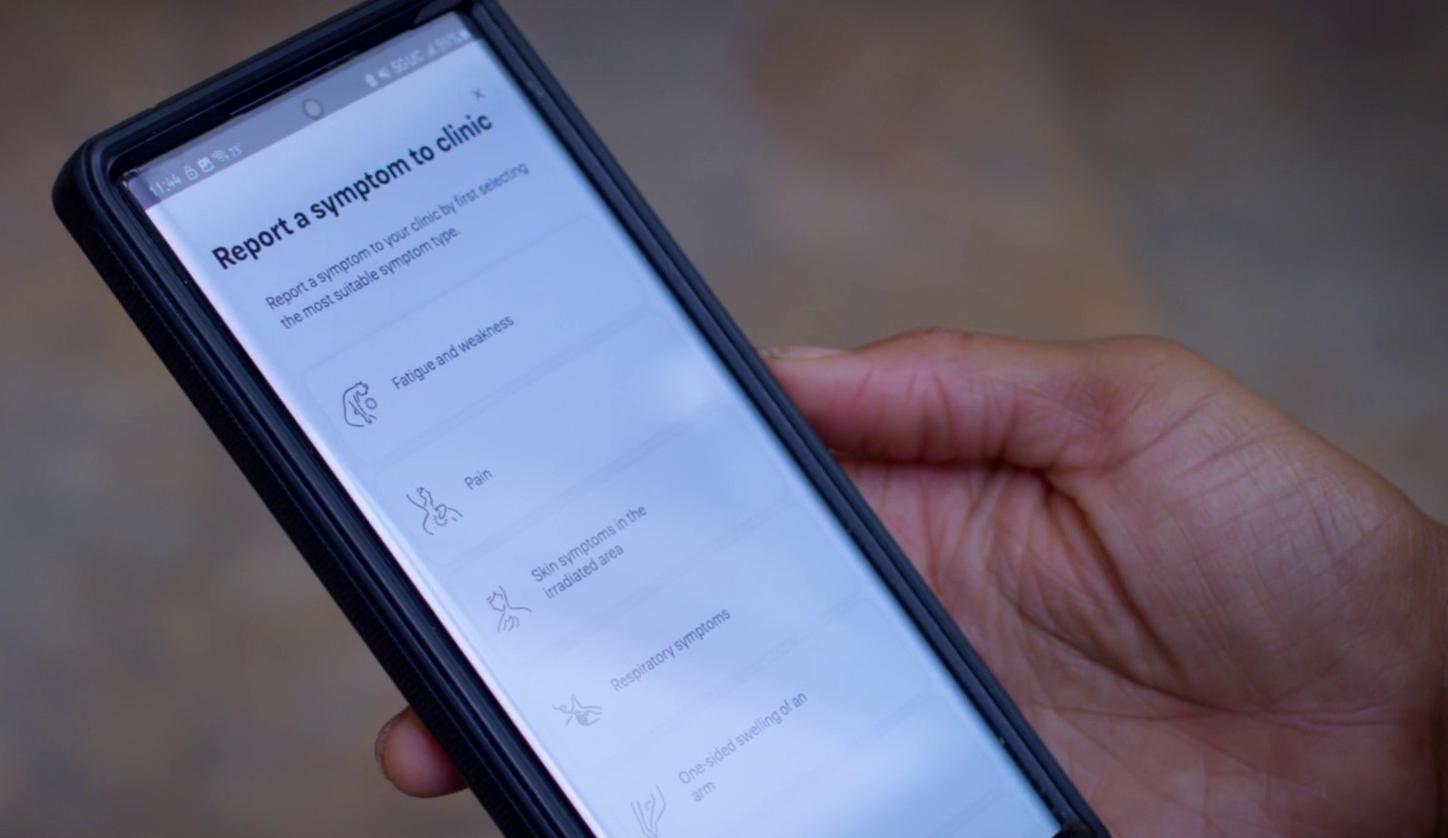
Outlook on lung cancer care
The future of cancer care
Video: Vision for cancer care
Podcast: Digital twin in cancer care
Learn how a digital twin of the patient could lead to early detection of cancer in the future using AI technology and medical expertise. Health data integration could enable personalized care even before hospitalization to achieve the best possible patient-reported outcomes.
The future of intelligent cancer care may expand the frontiers in oncology.
Learn more
[1] https://www.krebsdaten.de/Krebs/EN/Content/Cancer_sites/Lung_cancer/lung_cancer_node.html (Accessed Oct 7, 2025)
[2] ESIC
The statements by Siemens Healthineers customers/institutions described herein are based on results that were achieved in the customerтs or institutions' unique setting. Since there is no тtypicalт hospital and many variables exist (e.g., hospital size, case mix, level of IT adoption) there can be no guarantee that other customers/institutions will achieve the same results.
Not all products/features are commercially available in all countries. Their future availability cannot be ensured.NAEOTOM Alpha, NAEOTOM Alpha.Peak, NAEOTOM Alpha.Pro, and NAEOTOM Alpha.Prime are not commercially available in all countries. Their future availability cannot be ensured.
Several devices of AI-Rad Companion are planned and under development, not commercially available in all countries, and their future availability cannot be ensured. Please contact your local Siemens Healthineers organization for further details.
The Digital Twin video describes future ideas and concepts. It is not intended to describe specific performance and/or safety characteristics of currently planned or future products. Future realization and availability cannot be guaranteed. Names of persons are fictious; any similarities are purely coincidental.
Digital Twin is currently under development; it is not for sale in the USA. Its future availability cannot be guaranteed.









